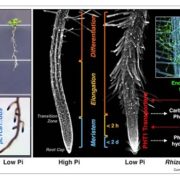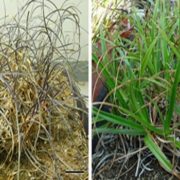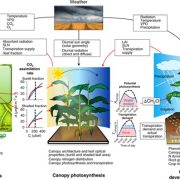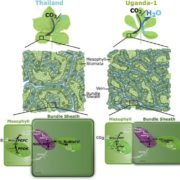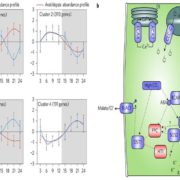Xylem Sap Surface Tension and Hydraulic Safety
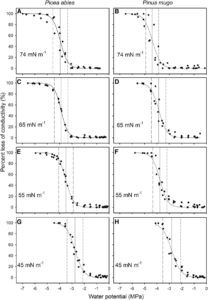 Xylem embolisms are induced by drought stress and/or freezing stress by means of “air-seeding,” that is the aspiration of gaseous bubbles into xylem conduits from adjacent gas-filled compartments via the pits. At water potentials less negative than the threshold for air seeding, the air-water interface is stabilized by the surface tension (γ) of the xylem sap. But is the γ of the xylem sap constant from season to season? Losso et al. (10.1104/pp.17.01053) studied seasonal changes in xylem sap γ in Picea abies and Pinus mugo growing at the alpine timberline. They analyzed the vulnerability of these trees to drought-induced embolism using solutions of different γs. and estimated the potential effect of seasonal changes in γ on hydraulic vulnerability. In both species, xylem sap γ showed pronounced seasonal changes. Variations in γ within the observed physiological range also causes changes in hydraulic vulnerability. Solutions with low γ caused higher vulnerability to drought-induced xylem embolism. The authors also noted pronounced effects of changes in xylem sap γ on the hydraulic safety of trees “in situ”.. Further studies are necessary to understand the variability of xylem sap γ and its effects on plant hydraulics.
Xylem embolisms are induced by drought stress and/or freezing stress by means of “air-seeding,” that is the aspiration of gaseous bubbles into xylem conduits from adjacent gas-filled compartments via the pits. At water potentials less negative than the threshold for air seeding, the air-water interface is stabilized by the surface tension (γ) of the xylem sap. But is the γ of the xylem sap constant from season to season? Losso et al. (10.1104/pp.17.01053) studied seasonal changes in xylem sap γ in Picea abies and Pinus mugo growing at the alpine timberline. They analyzed the vulnerability of these trees to drought-induced embolism using solutions of different γs. and estimated the potential effect of seasonal changes in γ on hydraulic vulnerability. In both species, xylem sap γ showed pronounced seasonal changes. Variations in γ within the observed physiological range also causes changes in hydraulic vulnerability. Solutions with low γ caused higher vulnerability to drought-induced xylem embolism. The authors also noted pronounced effects of changes in xylem sap γ on the hydraulic safety of trees “in situ”.. Further studies are necessary to understand the variability of xylem sap γ and its effects on plant hydraulics.


